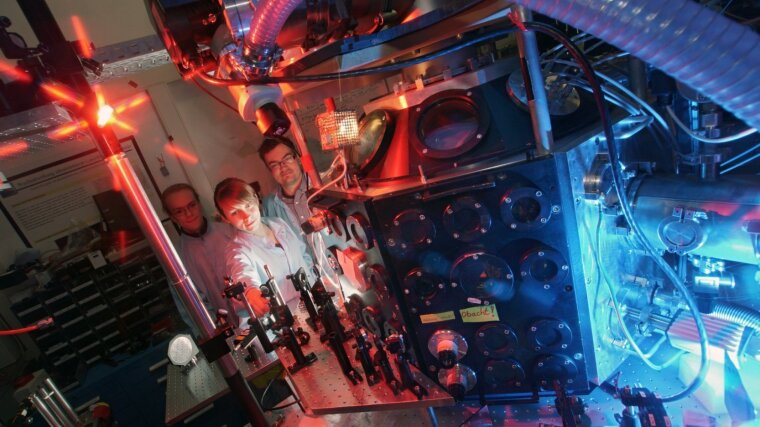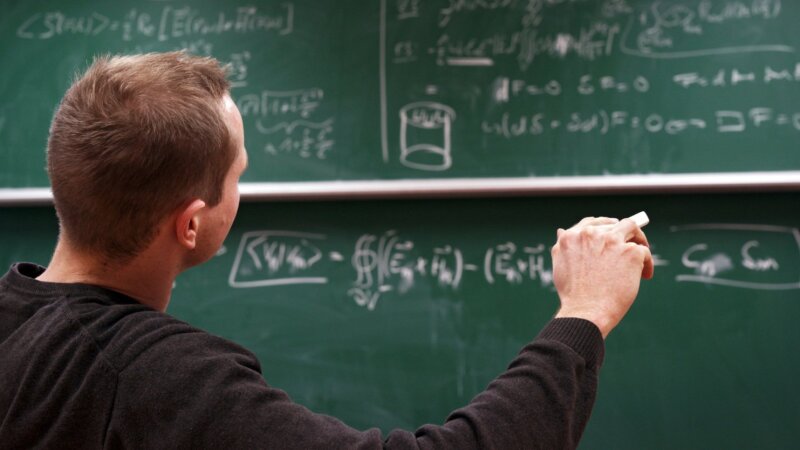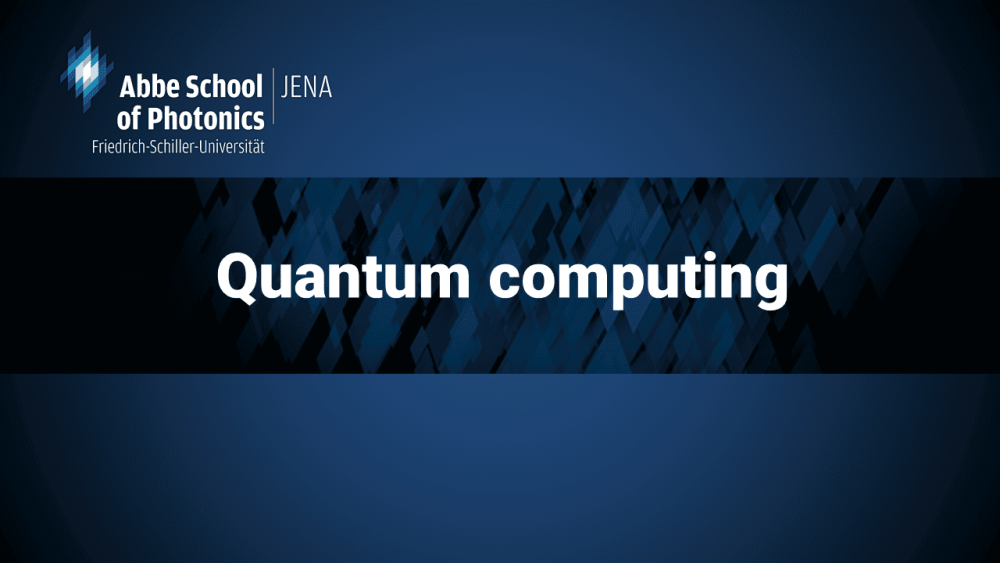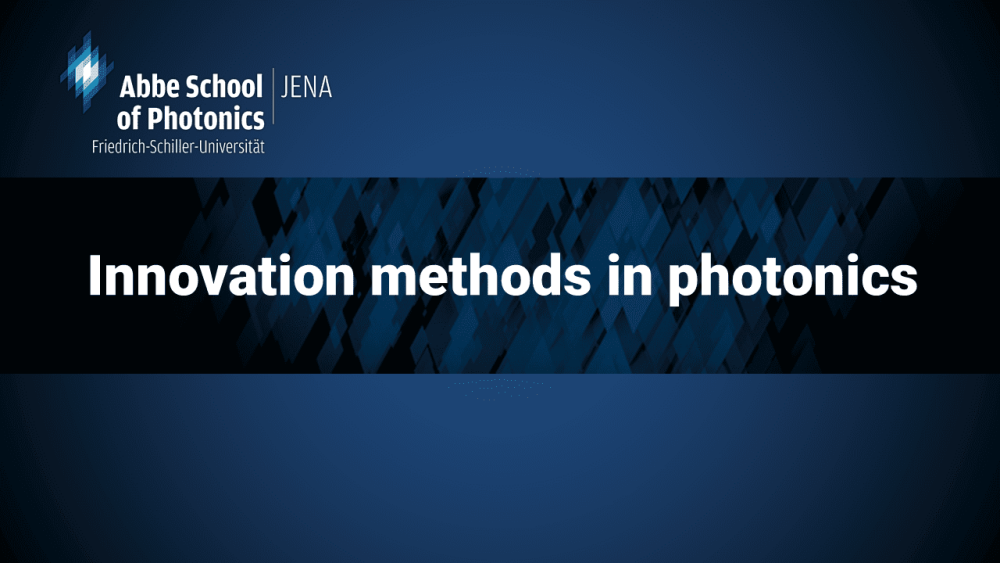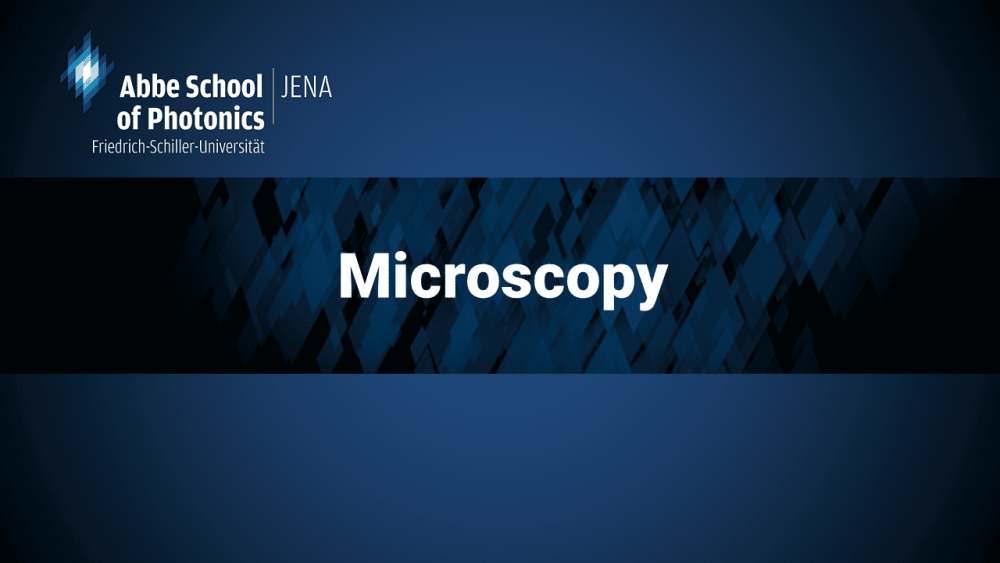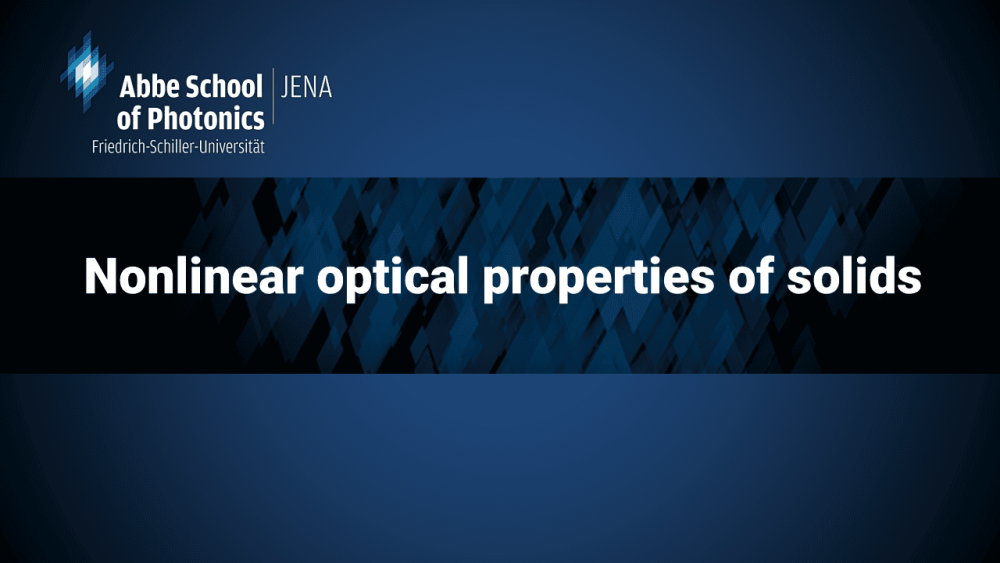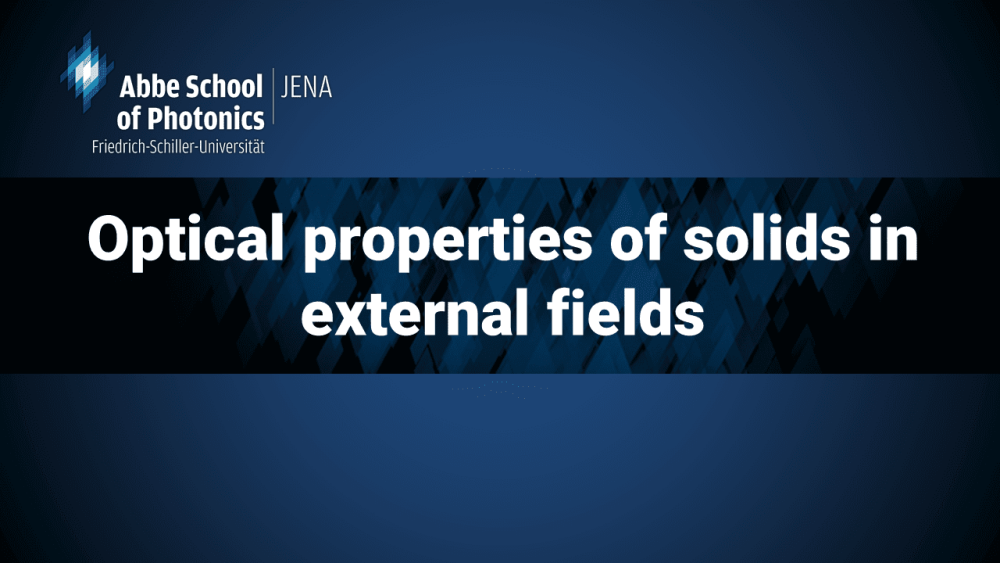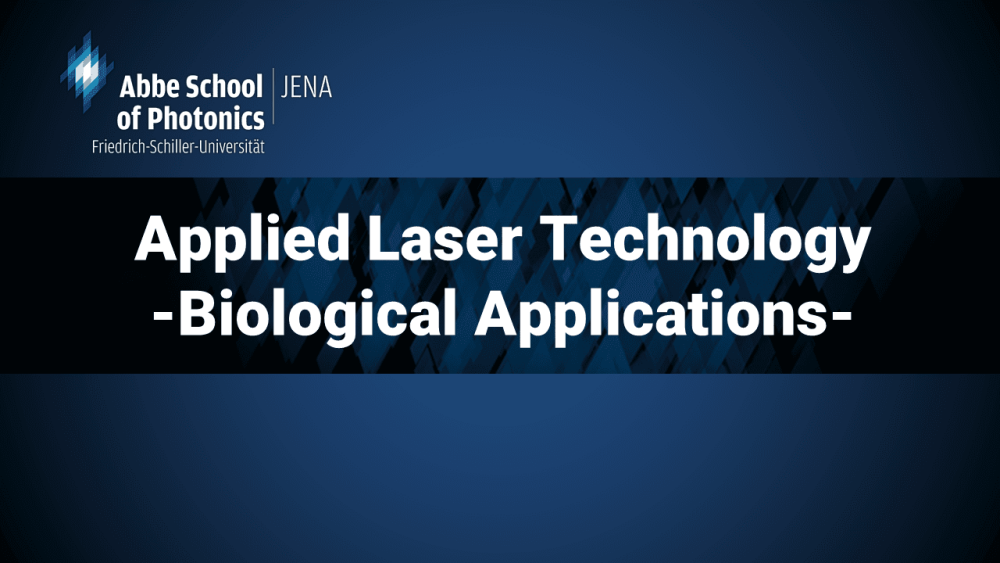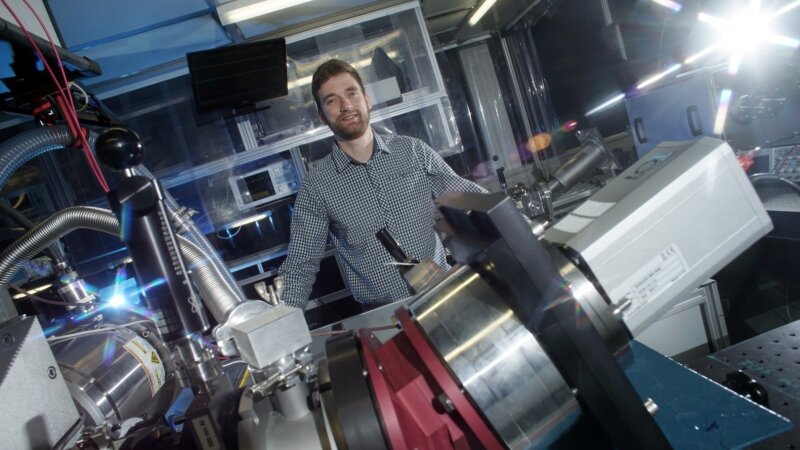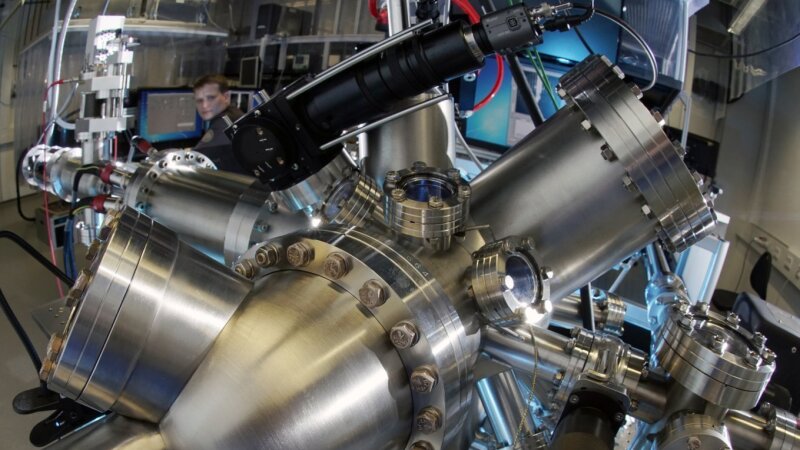-
Optical metrology and sensing (4 credits)
Content
- Basic principles
- Wave optical fundamentals
- Sensors
- Two- and multi-beam interferometry
- Wave front analysis
- Methods of phase measurement
- White-light interferometry
- Phase conjugation and retrieval
- Holography and holographic interferometry
- Fringe projection
- Triangulation
- Speckle methods and OCT
- Metrology of aspheres and freeform surfaces
- Confocal methods
-
Introduction to optical modeling (4 credits)
Recommended Reading
- H. Gross, Handbook of Optical Systems, Vol.1: Fundamentals of Technical Optics, Wiley-VCH.
- L. Mandel and E. Wolf, Optical Coherence and Quantum Optics, Cambridge university press.
- L. Novotny and B. Hecht, Principles of Nano-Optics, Cambridge university press.
-
Fundamentals of modern optics (8 credits)
Content
- Basic concepts of wave optics
- Dielectric function to describe light-matter interaction
- Propagation of beams and pulses
- Diffraction theory
- Elements of Fourier optics
- Polarization of light
- Light in structured media
- Optics in crystals
Intended Learning Outcomes
The course covers the fundamentals of modern optics which are necessary for the understanding of optical phenomena in modern science and technology. The students will acquire a thorough knowledge of the most important concepts of modern optics. At the same time, the importance and beauty of optics in nature and in technology will be taught. This will enable students to follow more specialized courses in photonics.
Recommended Reading
- B.E.A. Saleh and M.C. Teich, Fundamentals of Photonics, Wiley.
- H. Lipson, D.S. Tannhauser, S.G. Lipson, ”Optical Physics”, Cambridge.
- E. Hecht and A. Zajac, ”Optics”, Addison-Wesley Longman.
- F.L. Pedrotti, L.S. Pedrotti, L.M. Pedrotti, Introduction to Optics, Pearson.
- G. Brooker, Modern Classical Optics, Oxford.
-
Structure of matter (8 credits)
Content
- Classical interaction of light with matter
- Basic knowledge on quantum mechanics
- Einstein coefficients and Plancks formula
- Selection rules
- Hydrogen atom and helium atom
- Introduction to molecular spectroscopy
- Dielectric function and linear optical constants
- Kramers-Kronig-Relations
- Linear optical properties of crystalline and amorphous solids
- Basic nonlinear optical effects
Recommended Reading
- Demtröder, Experimental physics II, Springer.
- Demtröder, Experimental physics III – atoms, molecules and solids, Springer.
- R. Feynman, Feynman lectures on physics III quantum mechanics, Basic books.
- Jackson, Classical Electrodynamics, Wiley.
- E. Hecht, Optics, Pearson.
-
Advanced quantum theory (8 credits)
This course is only available to students who have already sufficiently covered either of the two courses above or equivalent during their previous studies. If you are an admitted or enrolled student at ASP, please discuss this option with your study coordinator before the start of the lecture period of the first semester (mid October).
-
Experimental optics (6 credits)
Content
- Refraction
- Optical lenses
- Interferometry
- Laser fundamentals
- Spectroscopy
- Optical tweezers
- Adaptive optics
Intended Learning Outcomes
Introduction to experimental techniques in optics; planning and preparation of a scientific measuring task; carrying out scientific labwork in optics together with a research team; preparation of a scientific report.
-
Laser physics (8 credits)
Content
- Introduction to laser physics (stimulated emission, atomic rate equations, laser pumping and population inversion)
- Optical beams and laser resonators
- Laser dynamics
- Q-switching
- Mode locking
- Wavelength tuning and single frequency operation
- Laser systems
- Selected industrial and scientific applications
Intended Learning Outcomes
This course provides an introduction to the basic ideas of laser physics. The first part presents the fundamental equations and concepts of laser theory, while the second part is devoted to a detailed discussion of selected laser applications. The students are introduced to the different types of lasers including classical gas or ruby lasers as well as modern high-power diode pumped solid-state concepts and their applications.
-
Accelerator-based modern physics (Stöhlker)
Content
- Basic concepts of particle accelerators
- Application of accelerators in basic science and medicine
- Landmark experiments
Intended Learning Outcomes
Gaining an overview of the various applications of particle accelerators, in particular for basic science; ability to solve exercise; prepare a presentation.
-
Analytical instrumentations (Szeghalmi/Tünnermann)
Content
- Atomic and molecular structure
- Basics of atomic spectroscopy techniques
- Molecular spectroscopy: absorption, emission, spectroscopy, microspectroscopy, and basics of magnetic resonance spectroscopy
- Hardware of spectrometers/microscopes: light sources, detectors, optics, and material point of view
- Current applications and relevance in material and life sciences
Intended learning outcomes
In this course, students will learn about analytical methods to investigate structure and composition of matter. Basic principles of atomic and molecular structure will be refreshed towards better understanding of experimental analysis techniques such as spectrophotometry, ellipsometry, fluorescence, infrared, Raman, spectroscopy and microscopy. The course will focus on technologicalaspects of the experimental setup in analytical instrumentations and modern applications of analytical instrumentations in material and life sciences will be discussed.
-
Atomic physics at high field strenghts (Stöhlker)
Content
- Strong field effects on the atomic structure
- Relativistic and QED effects on the structure of heavy ions
- X-ray spectroscopy of high-Z ions
- Application in x-ray astronomy
- Penetration of charged particles through matter
- Particle dynamics in of atoms and ions in strong laser fields
- Relativistic ion-atom and ion-electron collisions
- Fundamental interaction processes
- Scattering, absorption and energy loss
- Detection methods
- Particle creation
Intended learning outcomes
The Module provides insight into the basic techniques and concepts in physics related to extreme electromagnetic fields. Their relevance to nowadays applications will be discussed in addition. The Module also introduces the basic interaction processes of high-energy photon and particle beams with matter, including recent developments of high intensity radiation sources, such as free electron lasers and modern particle accelerators. Experimental methods and the related theoretical description will be reviewed in great detail.
-
Attosecond laser physics (Pfeiffer)
Content
- Coherent electron dynamics in atoms and molecules
- Strong field effects and ionization
- High harmonic generation and phase matching
- Techniques for attosecond pulse generation
- Transient absorption
- Attosecond quantum optics with few-level quantum models
Intended learning outcomes
The course gives an introduction into the young research field of attosecond physics. Electron dynamics in atoms and molecules on the attosecond time scale (which is the natural timescale for bound electrons) will be discussed, along with modern techniques for attosecond pulse generation and characterization.
-
Applied laser technology I (Eggeling/Cizmar)
Content
- Overview over laser beam applications as a contactless and remote
probe (macroscopic and microscopic, cw and ultrafast, dealing with
spectroscopy, metrology, sensing, and multi-dimensional microscopy) - Fundamental concepts of related physical and physico-chemical
effects - Absorption and emission of light (selection rules)
- Ultrafast coherent excitation and relaxation (linear and non-linear
optical processes) - Light reflection and elastic/inelastic scattering
Intended Learning Outcomes
The course covers the fundamentals and concepts of the selected laser applications and helps learning to develop own solutions for challenges in laser applications.
- Overview over laser beam applications as a contactless and remote
-
Biomedical imaging - nonionizing radiation (Reichenbach)
Content
Since the discovery of X-rays by Wilhelm Conrad Röntgen in 1895, imaging has become an invaluable part of science and medicine. Today, it has become an indispensable key technology in modern (bio)medicine. In addition to the use of ionizing radiation, there are alternative imaging systems that use non-ionizing (electro)magnetic fields or mechanical waves. These include magnetic resonance imaging, which is based on the phenomenon of nuclear magnetic resonance, and ultrasound imaging. The objective of this course is to introduce the physical principles, basic characteristics and technical concepts of these imaging systems. Recent developments and applications will be presented and serve to deepen the understanding of this area of imaging science. The course is intended for master students in medical photonics, and photonics, physics, materials science, and medical or other students with strong interest in these biomedical imaging techniques.
The following topics will be covered:
- Nuclear magnetic resonance (NMR) basics
- Fundamentals of magnetic resonance imaging (MRI)
- MRI sequences and imaging applications
- Fundamentals of ultrasound
- Ultrasound imaging and applications
- Optical coherence tomography (possibly)
Intended Learning Outcomes
To gain a critical understanding of the fundamentals and technology underlying these non-ionizing imaging systems, including instrumentation and various applications. In addition to lectures, the course includes other elements, such as short online quizzes, homework assignments, and programming assignments to solve problems by implementing algorithms in Matlab or Python, which are related to the methods described in the course. This course is independent of Biomedical imaging - ionizing radiation and does not require prior attendance of that course.
Recommed Reading
- J.T. Bushberg, J.A. Seiberg, E.M. Leidholdt, Jr., J.M. Boone, Essential Physics of Medical Imaging, Wolters Kluwer Health.
- A. Oppelt, Imaging Systems for Medical Diagnostics: Fundamentals, Technical Solutions and Applications for Systems Applying Ionizing Radiation, Nuclear Magnetic Resonance and Ultrasound, Publicis.
- P. Suetens, Fundamentals of Medical Imaging, Cambridge University Press.
- W.R. Hendee, E.R. Ritenour, Medical Imaging Physics, Wiley-Liss.
- J. Keeler, Understanding NMR Spectroscopy, Wiley.
- R.W. Brown, Y.-C.N. Cheng, E.M. Haacke, M.R. Thompson, R. Venkatesan, Magnetic Resonance Imaging, Wiley-Blackwell.
-
Biophotonics (Heintzmann/Ehricht)
Content
The Module provides a deep introduction into the multitude of possible linear and non-linear light biological matter interaction phenomena and thus in modern techniques and applications of frequency-, spatially-, and time-resolved bio-spectroscopy. The course presents a comprehensive overview over modern spectroscopic and optical imaging techniques including specific theoretical methodologies to analyze the experimental spectroscopic data and resolve problems in life sciences. The biological part introduces molecular and cellular properties of living organisms, explaining the basic structures and functions of prokaryotic and eukaryotic cells, as well as the most important biochemical substance classes and biochemical pathways where they are involved. Furthermore, basics in microbiology, especially in antimicrobial resistant bacteria, will be provided and combined with the introduction of diagnostic principles and selected infectious diseases.
Examples for molecular and serological assay and test development, basic methods for diagnostics, and epidemiology will be discussed. This sets the stage for biophotonic applications by showing several examples of how biophotonics can help to shed light on biologically and clinically relevant processes. The Module spans aspects of the scientific disciplines chemistry, physics, biology and medicine. The Exercises will be partly calculating examples and partly in the form a seminar talks of the students presenting current research publications. Intended learning outcomes.
Considering the differing learing environments and strategies, this lecture and seminar are offered in hybrid form. The initial 7 (out of 11) lectures are held in presence + live streaming (via zoom). The last four (about advanced and superresolution microscopy) will be discussed in presence + live stream. Video records of all lectures will be made available via moodle.
Intended Learning Outcomes
The aim of this course is to present modern methods in spectroscopy, microscopy and imaging dedicated to biological samples. After the course the students will be able to choose and to apply appropriate spectroscopic methods and imaging technology to resolve special biophotonic problems.
Recommended Reading
- Paras N. Prasad, Introduction to Biophotonics, Wiley.
- Textbooks on laser spectroscopy, e.g. Demtröder; on quantum mechanics, e.g. Atkins and on optics, e.g. Zinth/Zinth.
- Jerome Mertz, Introduction to Optical Microscopy, Roberts & Company Publishers.
- Selected chapters of Handbook of Biophotonics, Wiley.
- M. Baker, C. Hughes, K. A. Hollywood, Biophotonics: Vibrational Spectroscopic Diagnostics; IOP Publishing.
-
Computational photonics (Pertsch)
Content
- Introduction to the problem – Maxwell’s equations and the wave equation
- Free space propagation techniques
- Beam propagation methods applied to problems in integrated optics
- Mode expansion techniques applied to stratified media
- Mode expansion techniques applied to spherical and cylindrical objects
- Multiple multipole technique
- Boundary integral method
- Finite-Difference Time-Domain method
- Finite Element Method
- Computation of the dispersion relation (band structure) of periodic media
- Mode expansion techniques applied to gratings
- Other grating techniques
- Contemporary problems in computational photonics
Intended Learning Outcomes
The course aims at an introduction to various techniques used for computer based optical simulation. Therefore, the student should learn how to solve Maxwell’s equations in homogenous and inhomogeneous media rigorously as well as on different levels of approximation. The course concentrates predominantly on teaching numerical techniques that are useful in the field of micro- and nanooptics.
Watch this video for more informationExternal link -
Electronic structure theory (Rödl)
Content
- Introduction to the many-body problem
- Wavefunction-based approaches for electronic structure
- Density functional theory
- Electronic excitations: beyond density functional theory
Intended learning outcomes
Electronic structure theory is a successful and ever-growing field, shared by theoretical physics and theoretical chemistry, that takes advantage from the increasing availability of high-performance computers. Starting only from the knowledge of the types of atoms that constitute a material (molecule, solid, nanostructure..) we will learn how to determine without further experimental input, i.e. using only the laws of quantum physics, its structural and electronic properties. The lecture will initiate the students to the state-of-the-art theoretical and computational approaches used for electronic structure calculations.
In the practical classes the students will learn through tutorials to use different software for electronic structure simulations. During the last month they will realize a small independent scientific project. -
Fiber optics (M. Schmidt)
Content
- Mode formation in optical fibers (analytic model and numerics)
- Pulse propagation in optical fibers
- Materials and light matter-interaction
- Implementation of optical fibers
- Special fiber types (photonic crystal fibers, hollow fibers, polarization
maintaining fibers)
Intended learning outcomes
The aim of this module (lecture + tutorial) is to provide a comprehensive overview of waveguides with special emphasis on optical fibers. The course starts with a detailed introduction to the main parameters and physical principles, such as optical modes, dispersion and pulse propagation. The lecture then focuses on relevant materials (e.g., fused silica) and continues with a discussion of light-matter interaction in the context of optical fibers. The final part of the lecture will focus on different types of optical fibers, including graded index fibers, multimode fibers, and microstructured fibers. We will also discuss challenging concepts such as light guidance in hollow core fibers. This lecture will provide students with a solid knowledge base related to fiber optics, which is essential for anyone using fibers and waveguides in science and industry.
Requirements
Basic knowledge about electrodynamics.
Recommended reading
- A. Snyder and J. D. Love, Optical Waveguide Theory.
- G. P. Agrawal, Lightwave Technology.
- C. Yeh, The Essence of Dielectric Waveguides.
Information on the lecturer
-
Fundamental atomic and nuclear processes in highly ionized matter (Stöhlker)
Content
Lecture 1: "X-ray spectroscopy of hot plasmas"
- basic properties of atomic systems (level structure, transition rates,
etc.) - atomic charge-exchange processes in plasmas, charge state
distributions - creation of plasmas: facilities for stored and trapped ions
- x-ray detectors and techniques for spectroscopy and polarimetry
- x-ray diagnosis of plasmas in the laboratory and nature
Lecture 2: "Nuclear matter and the formation of elements"
- Properties of nuclear matter
- Stability of the atomic nucleus
- Nuclear models and masses of atomic nuclei
- Nuclear processes related to the creation of the elements
- Nuclear radiation and radiation detectors
- Experimental techniques
Intended Learning Outcomes
Gaining an overview of experiments addressing astrophysical topics, in particular concerning ionized matter.
- basic properties of atomic systems (level structure, transition rates,
-
History of optics (Mappes)
Content
The seminar covers the history of optics from the antiquity to the 20th century: Starting with Greek heories of vision and ending with quantum optics. A strong focus will be given on the development of concepts and experiments that influenced todays thinking about light and optics, such as wave particle dualism or the Abbe diffraction limit. An excursion the Jena’s Optical Museum is part of the seminar.
Intended Learning Outcomes
In close collaboration with the supervisor, the student will work on an independent project. The students will develop the ability to evaluate critically the arguments and analytical methods of historians. They will learn developing their own interpretations based on critical assessments of primary source evidence and independent research.
-
Image processing (Denzler)
Content
- Digital image fundamentals (Image Sensing and Acquisition, Image Sampling and Quantization)
- Image Enhancement in the Spatial Domain (Basic Gray Level Transformations, Histogram Processing, Spatial Filtering)
- Image Enhancement in the Frequency Domain (Introduction to the Fourier-Transform and the Frequency Domain, Frequency Domain Filtering, Homomorphic Filtering)
- Image Restoration (Noise Models, Inverse Filtering, Geometric Distortion)
- Color Image Processing Image Segmentation (Detection of Discontinuities, Edge Linking and Boundary Detection, Thresholding, Region-Based Segmentation)
- Representation and Description Applications
Intended Learning Outcomes
The course covers the fundamentals of digital image processing. Based on this the students should be able to identify standard problems in image processing to develop individual solutions for given problems and to implement image processing algorithms for use in the experimental fields of modern optics.
-
Innovation methods in photonics (Pertsch/Kretzschmar/Zakoth)
-
Integrated Optics (Setzpfandt)
Content
- Waveguide modes
- Theory of optical waveguides
- Losses in optical waveguides
- Coupling between waveguides
- Waveguide input- and output couplers
- Waveguide-based devices
- Waveguide fabrication techniques
Intended learning outcomes
The course will give a basic introduction into physics and theoretical description of integrated optical waveguides. This will include the modal description of light propagation in individual waveguides and the description of coupling between waveguide. Also, the course will introduce basic functional elements used in integrated optics, e.g. phase modulators and integrated interferometers. After active participation in the course, students will be able to understand and describe light propagation in integrated optical circuits and will have a strong foundation for studying more advanced concepts in integrated optics.
Recommended reading
- R. G. Hunsperger, Integrated Optics – Theory and Technology, Springer.
- T. Tamir, Integrated Optics, Springer.
- A. W. Snyder, J. D. Love, Optical Waveguide Theory.
-
Introduction to nanooptics (Pertsch/Staude)
Content
- Surface-plasmon-polaritons
- Plasmonics
- Photonic crystals
- Fabrication and optical characterization of nanostructures
- Photonic nanomaterials / metamaterials / metasurfaces
- Optical nanoemitters
- Optical nanoantennas
Intended learning outcomes
The course provides an introduction to the broad research field of nanooptics. Students will learn about different concepts which are applied to control the emission, propagation, and absorption of light at subwavelength spatial dimensions. Furthermore, they will learn how nanostructures can be used to optically interact selectively with nanoscale matter, a capability not achievable with standard diffraction limited microscopy. After successful completion of the course the students should be capable of understanding present problems of the research field and should be able to solve basic problems using advanced literature.
-
Introduction to x-ray spectroscopy (Röhlsberger)
Content
The module ‘Introduction to X-ray spectroscopy’ features, amongst others, the following major subjects:
- Introduction to the interaction of x-rays and matter: From electrons and atoms to nanostructures and complex materials,
- Introduction to advanced spectroscopy techniques at synchrotron radiation sources and x-ray lasers,
- Spectrometers for highest spectral resolution to study electronic structure and dynamics in condensed matter,
- Resonant spectroscopies to study the unique properties of magnetic nanostructures,
- Inelastic X-ray spectroscopy to probe vibrational and magnetic excitations like phonons and magnons in functional materials.
-
Laser driven radiation sources (Zepf)
Content
- Laser Plasma Interactions
- Principles of Plasma Accelerators
- Ultrafast Photon Sources
- Scattering of photons from particle beams
Intended Learning Outcomes
The course introduces the basic interaction processes of high-energy lasers with plasmas and particle beams with a particular emphasis on the extremely intense sources of proton, electron and photons with pulse durations in the femtosecond regime.
-
Laser fusion (Zepf)
Content
This is a new lecture in response to the recent breakthrough in fusion science. It adresses the physics and challenges of fusion energy generation and focuses on the specifics of laser-driven fusion.
-
Lens Design I (Tang/Zhang from ZEISS)
Content
- Introduction and user interface
- Description and properties of optical systems
- Geometrical and wave optical aberrations
- Optimization
- Imaging simulation
- Introduction into illumination systems
- Correction of simple systems
- More advanced handling and correction methods
Intended Learning Outcomes
This course gives an introduction in layout, performance analysis and optimization of optical systems with the software Zemax.
-
Micro/Nanotechnology (Siefke/Tünnermann)
Content
Micro- and nanooptical structures enable mankind to tailor basically all properties of light. In this course you will learn how to fabricate the required structures to shape light at your will.
This course is an introduction equally useful for theorists who want to incorporate real-world limitations into their designs and for practitioners who want to fabricate such structures themselves. The application-oriented course is focusing on the required techniques and facilities needed to fabricate micro- and nanooptics. This includes a comprehensive overview of the physical principles behind various lithography techniques, thin film coating and etching technology as well as insights into practicalities of working in clean room environments.
Intended Learning Outcomes
By the end of this course, you will understand:
- Specific requirements that micro- and nano-optics impose on fabrication technology
- Typical structure geometries and designs used in micro- and nano-optics
- Different types of coating technology
- The physical principles of lithography, the key process in creating microstructures
- Essential techniques of dry- and wet etching processes used in pattern transfer
- Real-world applications and examples that demonstrate the possibilities of micro- and nano-optics.
The course Micro- Nano Technology offers more than knowledge - it equips you with the tools and skills to shape tomorrow's world. If you're ready to innovate and leave your mark, however microscopic, this course is your stepping stone. Let's build the future, one nano-layer at a time.
-
Microscopy (Eggeling/Reina/Heintzmann)
Content
- Optical microscopy
- Circumventing the resolution limit
- Electron microscopy
- Atomic force microscopy
Intended Learning Outcomes
This module provides an introduction into the fundamentals of modern light and electron microscopy.
-
Modern methods of spectroscopy (Spielmann)
Content
- Fundamentals of light-matter interaction
- Experimental tools of spectroscopy
- Laser spectroscopy
- Time-resolved spectroscopy
- Laser cooling
- THz and X-ray spectroscopy
- Photoelectron spectroscopy
- Applications of laser spectroscopy in physics, chemistry, medicine
Intended Learning Outcomes
Understanding the methods of spectroscopy based on new developments in optics; impart knowledge about the design of a spectroscopic experiment; ability to independently solve spectroscopic questions.
-
Nano Engineering (Hoeppener/Schubert)
Content
- Building with Molecules
- Self-organization and self-assembled coatings
- Chemically sensitive characterization methods
- Nanomaterials for optical applications
- Nanowires and nanoparticles
- Nanomaterials in optoelectronics
- Bottom-up synthesis strategies and nanolithography
- Polymers and self-healing coatings
- Molecular motors
- Controlled polymerization techniques
Intended Learning Outcomes
A large diversity of nanomaterials can be efficiently produced by utilizing chemical synthesis strategies. The wide range of nanomaterials, i.e., nanoparticles, nanotubes, micelles, vesicles, nanostructured phase separated surface layers etc. opens on the one hand versatile possibilities to build functional systems, on the other hand also the large variety of techniques and processes to fabricate such systems is also difficult to overlook.
Traditionally the communication in the interdisciplinary field of nanotechnology is difficult, as expertise from different research areas is combined. This course aims on the creation of a common basic level for communication and knowledge of researchers of different research fields and to highlight interdisciplinary approaches which lead to new fabrication strategies. The course includes basic chemical synthesis strategies, molecular self-assembly processes, chemical surface structuring, nanofabrication and surface chemistry to create a pool of knowledge to be able to use molecular building blocks in future research projects.
Recommended Reading
- G. Cao, Nanostructures & Nanomaterials: Synthesis, Properties & Applications, Imperial College Press, 2004
- G.A. Ozin, A.C. Arsenault, L. Cademartiri, A Chemical Approach to Nanomaterials, Royal Soc. Of Chemistry, 2nd Ed., 2009
- L.F. Chi, Nanotechnology Vol. 8 Nanostructured Surfaces, Wiley-VCH, 2010
-
Nonlinear optical properties of 2D materials (Soavi)
Content
- Introduction to nonlinear optics and 2D materials
- Nonlinear optics for the characterization of crystal symmetries
- Examples of nonlinear optics in graphene
- Momentum conservation in nonlinear optics
- Nonlinear optical spectroscopy of excitons
- Nonlinear optics in layered magnets
Intended Learning Outcomes
Understanding the basic principles of nonlinear optics and how they can be applied to the study of atomically thin materials. Ability to read, understand and present in a clear way the most recent trends and published results in the field of nolinear optics with atomically thin materials.
-
Optics for spectroscopists: Optical waves in solids (Mayerhöfer)
Content
- Limitations and non-linearities of the (Bouguer-)Beer-Lambert law from wave-optics and dispersion theory based perspective.
- Reflection and Refraction at isotropic and anisotropic interfaces (Yeh's formalism, Berreman formalism, etc.)
- Dispersion relations (Classical damped harmonic oscillator, Lorentz-profile, coupled oscillator model, semi-empirical 4-parameter model, inverse dielecrtic function modelling, Kramers-Kronig relations etc.)
- Quantitative analysis of spectra with dispersion analysis and Kramers-Kronig analysis
Intended Learning Outcomes
The students will acquire an understanding about how pre-Maxwell spectroscopic concepts and quantities like the Beer-Lambert law and absorbance are related to their wave-optics based analogues. The final goal is to be able to quantitatively understand and analyze spectra based on dispersion theory and wave optics and to bridge the gap between spectroscopy and optics.
Recommended Reading
- Born & Wolf, Introduction to optics, Pergamon Press.
- Pocci Yeh, Optical Waves in layered Media, John Wiley & Sons Inc.
- Thomas Mayerhöfer, Wave Optics in Infrared Spectroscopy, Elsevier 2024.
-
Optical system design fundamentals (Blahnik)
Content
- Basic technical optics
- Paraxial optics
- Imaging systems
- Aberrations
- Performance evaluation of optical systems
- Correction of optical systems
- Optical system classification
- Special system considerations
Intended Learning Outcomes
This course covers the fundamental principles of classical optical system design, the performance assessment and the correction of aberrations. In combination of geometrical optics and physical theory the students will learn the basics to understand optical systems, which can be important for experimental work.
-
Optoelectronics (Soavi)
Content
- Semiconductors
- Optoelectronic devices
- Photodiodes
- Light emitting diodes
- Semiconductor optical amplifier
Intended Learning Outcomes
In this course the student will learn the fundamentals of semiconductor optical devices such as photodiodes, solar cells, LEDs, laser diodes and semiconductor optical amplifiers.
-
Particles in strong electromagnetic fields (Zepf/Rykovanov)
Content
- Electrons in constant fields
- Electrons in electromagnetic pulses
- Radiation produced by particles in extreme motion
- Radiation reaction
- QED effects in strong laser fields
Intended Learning Outcomes
This course is devoted to the dynamics of charged particles in electromagnetic fields. Starting with motion of electrons in constant magnetic and electric fields, the course continues with the electron motion in electromagnetic pulses (i.e. laser pulses) of high strength (i.e. when laser pressure becomes dominant). Radiation produced by electrons in extreme motion will be calculated for several most important cases: synchrotron radiation, Thomson scattering, undulator radiation. Effects of radiation reaction on electron motion will be discussed. The last part of the course will briefly discuss the QED effects in strong laser fields: stochasticity in radiation reaction, pair production by focused laser pulses and QED cascades. Analytical framework will be complemented with the help of numerical calculations.
-
Photovoltaics (Paulus)
Content
- Pertinent elements of thermodynamics and statistical mechanics (diffusion, Boltzmann factor, free energy)
- Fundamental concepts of solid state physics
- Semiconductors and pn-junction
- Diode equation
- Shockley-Queisser limit
- Design criteria for solar cells
Intended Learning Outcomes
- Profound understanding of the physics underlying the performance of solar cells
- Development of an understanding of the role of photovoltaics for covering the energy demand of modern societies.
- Capability to solve complex problems pertinent to solar cells
-
Physical optics (Franke)
Content
- Wave optics, light propagation
- Diffraction, slit, PSF, aberrations
- Coherence, temporal and spatial, OCT, speckle
- Laser, resonators, laser beams, pulses
- Gaussian beams, propagation, generalizations, Schell beams
- Fourier optics, resolution, image formation, OTF, criteria
- Quality criteria of imaging
- PSF engineering, superresolution, extended depth of focus
- Confocal methods, laser scanning, metrology
- Polarization, fundamentals, Jones vectors, birefringence
- Photon optics, uncertainty, statistics
- Scattering, surfaces, volume models, tissue optics
- Miscellaneous, coatings, non-linear optics, short pulses
Intended Learning Outcomes
The course covers the basic understanding of physical optical subjects in the context of optical systems. Parts of the lectures are given by a Dr. B. Böhme / C. Zeiss and M. Dienerowitz / Medical Faculty to include industrial and practical viewpoints.
-
Physics of free electron laser (Paulus)
Content
- Physical foundations of X-ray lasers
- Undulators
- FEL differential equation
- Instrumentation
- Selected applications
Intended learning outcomes
The student understands the physical foundations, instrumentation, and selected applications of FELs. Acquisition of the competence to judge the applicapility and significance of FELs to address problems in X-ray physics.
-
Plasma physics (Kaluza)
Content
- Fundamentals of plasma physics
- Single particle and fluid description of plasmas
- Waves in plasmas
- Interaction of electromagnetic radiation with plasmas
- Plasma instabilities
- Non-linear effects (shock waves, parametric instabilities, ponderomotive effects, ...)
Intended learning outcomes
This course offers an introduction to the fundamental effects and processes relevant for the physics of ionized matter. After actively participating in this course, the students will be familiar with the fundamental physical concepts of plasma physics, especially concerning astrophysical phenomena but also with questions concerning the energy production based on nuclear fusion in magnetically or inertially confined plasmas.
-
Quantum computing (Eilenberger/Steinlechner/Pertsch)
Content
- Basic introduction to algorithms and computing
- The Qubit and entanglement thereof
- Basics of quantum algorithms
- Advanced quantum algorithms
- Implementation of QuBits and quantum computers
- Hands-on circuits
Intended learning outcomes
After active participation in the course, the students will be familiar with the basic concepts of quantum computation and the implementation of quantum algorithms. They will be able to apply their knowledge in the assessment and creation of quantum algorithms and the development of quantum information systems.
The intended learning outcome is to introduce the students to the basic usage of quantum bits for information processing. To provide further insight, the course will expand this concept on multipartite systems and introduce the concept of entanglement.
In a further step we shall see how individual quantum operations tie together to create algorithms. Important algorithms, such as the quantum Fourier transformation, the algorithms of Shor and Grover will be discussed. To relate the abstract knowledge on quantum algorithms to practical applications, real-world implementations of quantum computers will be discussed.
-
Quantum optics (Setzpfandt)
Content
- Basic introduction to quantum mechanics
- Quantization of the free electromagnetic field
- Non-classical states of light and their statistics
- Experiments in quantum optics
- Semi-classical and fully quantized light-matter interaction
- Non-linear optics
Intended Learning Outcomes
The course will give a basic introduction into the theoretical description of quantized light and quantized light-matter interaction. The derived formalism is then used to examine the properties of quantized light and to understand a number of peculiar quantum optical effects. After active participation in the course, the students will be familiar with the basic concepts and phenomena of quantum optics and will be able to apply the derived formalism to other problems.
-
Renewable energies (Paulus)
Content
- Basics of energy supply in Germany
- Potential of renewable energies
- Principles of the energy balance of planets
- Thermodynamics of the atmosphere
- Physics of wind energy systems
- Elements of solar power generation
Intended Learning Outcomes
Teaching of knowledge on the fundamentals of renewable energies. Development of skills for the independent evaluation of different types of renewable energies.
-
Semiconductor nanomaterials (Staude)
Content
- Review of fundamentals of semiconductors
- Optical and optoelectronic properties of semiconductors
- Effects of quantum confinement
- Photonic effects in semiconductor nanomaterials
- Physical implementations of semiconductor nanomaterials, including epitaxial structures, semiconductor quantum dots and quantum wires
- Advanced topics of current research, including 2D semiconductors and hybrid nanosystems
Intended Learning Outcomes
This course aims to convey a fundamental understanding of the physics governing the optical and optoelectronic properties of semiconductor nanomaterials. First, the fundamental optical and optoelectronic properties of bulk semiconductors are reviewed, deepening and extending previously obtained knowledge in condensed matter physics. The students will then learn about the effects of quantum confinement in semiconductor systems in one, two or three spatial dimensions, as well as about photonic effects in nanostructured semiconductors. Finally, several relevant examples of semiconductor nanomaterial
systems and their applications in photonics are discussed in detail. After successful completion of the course, the students should be capable of understanding present research directions and of solving basic problems within this field of research. -
Strong-field laser physics (Paulus)
Content
- Characteristic quantities in attosecond laser physics
- Characteristic effects (above-threshold generation, high-harmonic generation, non-sequential double ionization)
- Experimental techniques
- Theoretical description of strong-field electron dynamics
- Recollision as a fundamental process in strong-field and
- Attosecond laser physics
- Generation and measurement of attosecond pulses
Intended Learning Outcomes
Knowledge of the fundamentals of high-field laser physics and attosecond laser physics based on it. Development of skills for the independent treatment of questions of these fields.
-
Theory of nonlinear optics (Peschel)
Content
- Types and symmetries of non-linear polarization
- Coupling between optical fields and nonlinear matter
- Solutions of non-linear evolution equations
- Frequency conversion in crystals with quadratic nonlinearity
Intended Learning Outcomes
The course provides the theoretical background to understand nonlinear optics.
Recommended Reading
… on nonlinear materials
- Butcher and Cotter, The Elements of Nonlinear Optics, Cambridge University Press, 1990.
- Richard Lee Sutherland, Handbook of nonlinear optics, 2003.
- Govind Agrawal, Contemporary nonlinear optics, Academic Press 1992.
…on general nonlinear optics
- Schubert and Wilhelmi, Nonlinear optics and quantum electronics, 1986.
- Jerome V. Moloney and Alan C. Newell, Nonlinear optics, 1990.
- Bahaa Saleh and Malvin C. Teich, Fundamentals of Photonics, Wiley, 2007.
-
XUV and x-ray optics (Kartashov/Spielmann)
Content
- Complex refractive index in the XUV and X-ray range
- Refractive and grazing incidence optics
- Zone plate optics
- Thomson and Compton scattering
- X-ray diffraction by crystals and synthetic multilayers
- VUV and X-ray optics for plasma diagnostics
- Time-resolved X-ray diffraction
- EUV lithography
Intended learning outcomes
This course covers the fundamentals of modern optics at short wavelengths as they are necessary for the design of EUV and X-ray optical elements. Based on this the students will learn essentials of several challenging applications of short-wavelength optics, being actual in modern science and technology.
-
Internship (10 credits)
Module Components
Practical course of 300 h. Depending on the topic this total workload should be distributed approximately as: 50 h introduction to the research topic (study of relevant literature, …), 190 h research work (in the lab for experimental topics and atcomputer etc. for theoretical topics), 50 h preparation of the final report, and 10 h preparation and carrying out presentation of the results
Intended Learning Outcomes
Carrying out scientific labwork in photonics together with a research team; preparation of a written scientific report; presentation and defense of the results in an oral presentation.
-
Active photonic devices (M. Schmidt)
Content
- Introduction
- Electro-optical modulation
- Optomechanics in photonics
- Acousto-optical devices
- Magneto-optics and optical isolation
- Integrated lasers
- Non-Linear devices for light generation
- Bistability in photonics
- Spatial light modulation
Intended Learning Outcomes
The aim of this module (lecture + exercise) is to give a comprehensive overview about active photonic devices such as switches or modulators. The course starts by a crisp introduction to the most important parameters and physical principles. The lecture will then focus onto real-world devices including the areas of electro-optics, waveguides, acousto-optics, magneto-optics and nonlinear optics. During this lecture we will discuss the fundamental principles as well as devices currently employed in photonics. This lecture will provide the students a base for their master thesis.
Requirements
Basic knowledge about electrodynamics.
Recommended Reading
- J. D., Jackson Electrodynamics, Wiley.
- A. Yariv, Optical Electronics in Modern Communications, Oxford University Press.
- Born & Wolf, Principles of Optics, Pergamon Press.
-
Advanced quantum optics (Saravi/Setzpfandt)
Content
The course will extend on the topics discussed in the ”Quantum Optics” lecture given in the summer semester and will explore topics that are more advanced.
The main part of the lecture (about two-third) will be devoted to treatment of light-matter interaction in open quantum systems. Any realistic quantum system (an atom or the quantized field) will experience loss of quantum coherence through interaction with the surrounding environment (for example by losing a photon through imperfect cavity mirrors). Investigation of realistic quantum optical systems requires methods that can treat such systems, without having to keep full track of the properties of the large surrounding environment. To do this, we will learn about the density-matrix approach and Lindblad master equation for solving the dynamics of open quantum systems in the Schrödinger picture. In the seminar, we will address the important problem of an atom in an imperfect cavity, and thoroughly investigate this system from different aspects.A smaller part of the lecture (about one-third) will be devoted to introducing the physics and the mathematical methods for phase-space treatments in quantum optics, such as introducing quasi-probability distributions (for example the Wigner function) and investigating the quasi-probability distributions of some basic states like coherent states, squeezed states, and Fock states.
Recommended Reading
Useful references for the lecture are (but not inclusive to) the following books: Quantum Optics by Scully & Zubairy, Quantum Optics by Garrison & Chiao, and Elements of Quantum Optics by Sargent & Meystre. The lecture does not exactly follow these books, but the main methods and the physics explored in the lecture can be found in these books. There are detailed handwritten lecture notes, which will be made available after every lecture.
-
Applied laser technology II (Eggeling/Cizmar)
Content
- Applied Laser Technology using the laser as a tool
- Microscopic and macroscopic light-materials-interactions,
- Material preparation and modification (with the exception of classical laser materials' processing)
Intended Learning Outcomes
In various selected topics out of the broad field of laser applications, the students should acquire knowledge of laser-material interactions (e.g. atom cooling and optical tweezer), laser induced processes in gases, liquids, and matrices (incl. laser isotope separation), materials' preparation and structuring by ablation, deposition and/or modification.
-
Biomedical imaging - ionizing radiation (Reichenbach)
Content
Since the discovery of X-rays by Wilhelm Conrad Röntgen in 1895, imaging has become an invaluable part of science and medicine. Indeed, it is indispensable in modern (bio)medicine. Standard imaging techniques using ionizing radiation include classical X-ray projection imaging and computed tomography (CT), first introduced in the 1970s, as well as imaging techniques using radioactive tracer molecules. The objective of this course is to introduce the physical principles, basic characteristics and technical concepts of these imaging systems. Recent developments and applications will be presented and serve to deepen the understanding of this area of imaging science. The course is intended for master students in medical photonics, and photonics, physics, materials science, and medical or other students with strong interest in these biomedical imaging techniques.
The following topics will be covered:
- Fundamentals of x-ray physics
- Medical x-ray technology
- Image quality
- Imaging applications
- Computed tomography (CT)
- Nuclear medical imaging
- Radiation therapy fundamentals (possibly)
Intended Learning Outcomes
To gain a critical understanding of the fundamentals and technology underlying these imaging systems, including instrumentation and various applications. In addition to lectures, the course includes other elements, such as short online quizzes, homework assignments, and programming assignments to solve problems by implementing algorithms in Matlab or Python, which are related to the methods described in the course. This course is independent of Biomedical Imaging - non-ionizing radiation and does not require prior attendance of that course.
Recommended Reading
- A. Oppelt, Imaging Systems for Medical Diagnostics: Fundamentals, Technical Solutions and Applications for Systems Applying Ionizing Radiation, Nuclear Magnetic Resonance and Ultrasound, Publicis.
- P. Suetens, Fundamentals of Medical Imaging, Cambridge University Press.
- W.R. Hendee, E.R. Ritenour, Medical Imaging Physics, Wiley-Liss.
- J.T. Bushberg, J.A. Seiberg, E.M. Leidholdt, Jr., J.M. Boone Essential Physics of Medical Imaging, Wolters Kluwer Health.
-
Computational imaging (Lötgering/Heintzmann)
Content
- Review: Linear Algebra, Calculus, Python
- Optimization part 1: Continuous (Euler Lagrange) and Discrete (multivariate calculus)
- Programming lab: genetic algorithms + Fermat principle
- Optimization part 2: nonlinear optimization, regularization, Lagrange multipliers
- Optimization part 3: Convex techniques, l1 minimization
- Programming lab: single pixel camera
- Optimization part 4: Automatic differentiation
- Matrix representation of coherent optical systems
- Programming lab: keras toolbox, optical eigenmodes
- Multiple scattering: Born / Rytov series, beam propagation method
- Tomographic inversion
- Programming lab: Foldy-Lax scattering theory
- Phase retrieval part 1: coherent diffraction imaging (CDI)
- Phase retrieval part 2: ptychography
- Programming lab: hybrid input output, shrink wrap, ptychography
- Phase retrieval part 3: Fourier ptychography
- Image deconvolution: structured illumination microscopy, pupil engineering
- Programming lab: extended depth-of-field systems
- Imaging with spatially partially coherent light
- Parameter estimation: Fisher information and Cramer Rao lower bound
- Programming lab: Coded aperture imaging, resolution assessment, edge responses, modulation transfer function, Fourier ring correlation
- Neural networks part 1: Image classification
- Neural networks part 2: Image regression
- Programming lab: digit recognition, counting red blood cells
Recommended Reading
- G. J. Gbur, Mathematical methods for optical physics and engineering, Cambridge University Press.
- S. Brunton and J. N. Kutz, Data-driven science and engineering: Machine learning, dynamical systems, and control, Cambridge University Press.
- G. Strang, Linear algebra and learning from data, Cambridge: Wellesley-Cambridge Press.
-
Experimental nonlinear optics (Paulus)
Content
- Propagation of light in crystals
- Properties of the non-linear susceptibility tensor
- Description of light propagation in non-linear media
- Parametric effects
- Second harmonic generation
- Phase-matching
- Propagation of ultrashort pulses
- High-harmonic generation
- Solitons
Intended Learning Outcomes
This course gives an introduction to optics in non-linear media and discusses the main non-linear effects.
-
Experimental quantum technology (Setzpfandt)
Content
The course will introduce quantum optics and related quantum technology in a phenomenological way, centered on particular experiments that show specific features or applications of non-classical light and other quantum systems. It will contain hands-on experiences, where the students themselves perform quantum-optical experiments or program quantum algorithms, as well as classroom instruction. The course will cover:
- properties, generation, and detection of nonclassical light
- experimental techniques in quantum optics
- applications of quantum optics
- hands-on training in quantum optics experiments
- hands-on training in quantum computing
Intended Learning Outcomes
The course will give a basic introduction into the properties and applications of quantum light from a practical perspective. Thus, it complements the course “Quantum Optics,” which introduces quantum optics in a more rigorous and fundamental way. This course will enable the participating students to understand and perform quantum optics experiments. Furthermore, the programming of quantum computers to execute certain algorithms will be taught. Thus, the course prepares for further own work in the area of quantum optics and quantum technology.
Recommended Reading
- M. Fox, “Quantum Optics – An introduction”, Oxford University Press.
- H.-A. Bachor, T. C. Ralph “A guide to experiments in quantum optics”, John Wiley & Sons.
- IBM "The QISKIT Book".
-
Graphene: electronic and optical properties (Soavi)
Content
- Introduction to graphene
- Band structure and Dirac Hamiltonian
- Dirac fermions
- Optical properties of graphene: Raman and and absorption
Intended Learning Outcomes
Understanding the relativistic character of electrons in graphene and its impact on the electrical and optical properties. Ability to read, understand and present in a clear way the most recent trends and published results in the field of graphene (hydrodynamic regime of electrons, unconventional superconductivity in twsited bilayer graphene etc.)
-
High-intensity and relativistic optics (Kaluza)
Content
- High-intensity laser technology
- Laser plasma physics
- Laser accelerated particles and applications
Intended Learning Outcomes
The interaction of high intensity light fields with matter is the subject of this course. The students should learn the basic ideas of high intensity laser technology and its applications.
Recommended Reading
- W. L. Kruer, The Physics of Laser Plasma Interactions, Westview press.
- P. Gibbon, Short Pulse Laser Interactions with Matter, Imperial College Press.
- F. F. Chen, Introduction to Plasma Physics and Controlled Fusion, Springer.
- Hiroyuki Fujiwara, Spectroscopic Ellipsometry: Principles and Applications, Wiley.
- Mark Fox, Optical Properties of Solids, Oxford University Press.
-
Image processing in microscopy (Heintzmann)
Content
We will show different methodologies to extract specific information such as for example the average speed of diffusing particles or the locations and areas of cells from the multidimensional image data. Also fitting quantitative models to extracted data will be treated. Simulation of far-field intensity distribution by using simple Fourier-space based approaches is treated with and without considering the vectorial nature of the oscillating electro-magnetic field.
Intended Learning Outcomes
Current microscopy often acquires a large amount of image data from which the biological or clinical researcher often needs to answer very specific questions.A major topic is the reconstruction of the sample from the acquired, often complex, microscopy data. To solve such inverse problems, a good model of the data acquisition process is required, ranging from assumptions about the sample (e.g. a positive concentration of molecules per voxel), assumptions about the imaging process (e.g. the existence of an incoherent spatially invariant point spread function) to modeling the noise characteristics of the detection process (e.g. read noise and photon noise).
-
Introduction to modern x-ray science (Röhlsberger)
Content
The lecture gives an introduction into the foundations of the interactions of x-rays with matter. Special emphasis will be given on the role of modern x-ray sources like synchrotrons and x-ray lasers. Several fascinating applications of x-rays in the natural sciences will be presentend, ranging from materials science and structural biology to the new field of quantum and nonlinear optics with x-rays.
- Generation of x-rays: X-ray tubes, synchrotrons and x-ray lasers(3) X-ray optics: Refraction and Reflection of X-rays(5) Dynamical Scattering Theory(7) Anomalous scattering and x-ray spectroscopy(9) X-ray studies of thin films and magnetic nanostructures
- Quantum and nonlinear optics with X-rays
- Imaging with coherent X-rays
- Small-angle x-ray scattering
- Kinematical Scattering Theory
- Interaction of X-rays with matter: Basic mechanisms
Recommended Reading
Jens Als-Nielsel & Des McMorrow, Elements of Modern X-ray Physics, Wiley.
-
Laser driven radiation sources (Zepf)
Content
- Laser Plasma Interactions
- Principles of Plasma Accelerators
- Ultrafast Photon Sources
- Scattering of photons from particle beams
Recommended Reading
The course introduces the basic interaction processes of high-energy lasers with plasmas and particle beams with a particular emphasis on the extremely intense sources of proton, electron and photons with pulse durations in the femtosecond regime.
-
Laser engineering (Kaluza)
Content
- Origin and dependencies of absorption and emission cross sections
- Ytterbium based laser media
- Design of laser diode pump engines,
- Special topics in geometrical optics for amplifier design
- Basic calculations for layout of diode pumped high energy amplifiers
- Ytterbium based laser materials and cryogenic cooling
- Limitations and special topics (laser induced damage threshold [LIDT], amplified spontaneous emission [ASE]… )
Intended Learning Outcomes
This is an application oriented course focusing on topics needed for development and design of diode pumped high energy class laser systems. Besides general topics the main part of this lecture is dedicated to ytterbium based laser systems. Besides basic knowledge like the spectral properties of laser materials and their significance for a laser system, further key topics like laser induced damage thresholds, laser diode pump engines, modeling of amplification and amplified spontaneous emission will be discussed.
Recommended Reading
- W. Koechner, Solid-state laser engineering, Springer.
- F. Träger, Springer handbook of lasers and optics, Springer Science & Business Media.
- R. M. Wood, Laser-induced damage of optical materials, CRC Press.
-
Lens Design II (Tang/Zhang from ZEISS)
Content
- Paraxial imaging and basic properties of optical systems
- Initial systems and structural modifications
- Chromatical correction
- Aspheres and freeform surfaces
- Optimization strategy and constraints
- Special correction features and methods
- Tolerancing and adjustment
Intended learning outcomes
This course covers the advanced principles of the development of optical systems.
-
Light microscopy (Heintzmann)
Content
Starting from geometrical optics the imaging system will be described and optical aberrations will be discussed. Moving on to wave optics monochromatic waves will be taken as the basis for the description of coherent imaging. Combined with scattering theory in the 1st Born approximation a fundamental understanding of the possibilities and limitations in imaging is gained. The concept of the amplitude transfer function and McCutchens 3-dimensional pupil function are introduced. On this basis various coherent imaging modes are discussed including holographic approaches and their limitations, and optical coherent tomography. The working principles of light-detectors are discussed and the requirements for appropriate sampling of images. Finally various modes of fluorescence microscopy and high-resolution microscopy will be covered. The exercises will be calculating examples, also involving hands-on computer based modeling using Matlab and other tools.
Intended Learning Outcomes
Understanding of the working principles of modern light microscopes and microscopic methods ranging from standard methods to modern superresolution techniques.
-
Optical properties of solids in external fields (H. Schmidt)
-
Physical optics (Franke)
Content
- Wave optics, light propagation
- Diffraction, slit, PSF, aberrations
- Coherence, temporal and spatial, OCT, speckle
- Laser, resonators, laser beams, pulses
- Gaussian beams, propagation, generalizations, Schell beams
- Fourier optics, resolution, image formation, OTF, criteria
- Quality criteria of imaging
- PSF engineering, superresolution, extended depth of focus
- Confocal methods, laser scanning, metrology
- Polarization, fundamentals, Jones vectors, birefringence
- Photon optics, uncertainty, statistics
- Scattering, surfaces, volume models, tissue optics
- Miscellaneous, coatings, non-linear optics, short pulses
Intended Learning Outcomes
The course covers the basic understanding of physical optical subjects in the context of optical systems.
Recommended Reading
- B. Saleh & M. Teich, Fundamentals of Photonics, Wiley.
- W. Singer, M. Totzeck, and H. Gross, Handbook of optical systems, Wiley.
- J. Goodman, Introduction to Fourier Optics, Wiley.
- A. Lipson & S. Lipson, Optical Physics, Cambridge.
- G. Reynolds & J. deVlies, The Physical Optics Notebook, SPIE Press.
- J. Goodman, Statistical Optics, Wiley.
- E. Hecht, Optics, deGruyter.
- C. Brosseau, Polarized Light, Wiley.
- J. Stover, Optical Scattering, McGrawHill.
- M. Nieto-Vesperinas, Scattering and Diffraction in Physical Optics, World Scientific.
- A. Siegman, Lasers, Oxford University.
- F. Trager, Handbook of Lasers and Optics, Springer.
-
Physics of ultrafast optical discharge and filamentation (Spielmann/Kartashov)
Content
- Physics of Photoionization
- Optical breakdown
- Basics plasma kinetics
- LIBS Laser induced breakdown spectroscopy
- Physics of filamentation
- Applications: LIDAR, lightning discharge, supercontinuum generation
Intended learning outcomes
In a selected number of topics out of the broad field of high power laser matter interactions the students should acquire knowledge of ionization, plasma kinetics, filamentation and applications in spectroscopy metrology and atmospheric science.
-
Quantum communication (Steinlechner/Eilenberger/Tünnermann)
Content
- Basic introduction to quantum optics
- Quantum light sources
- Encoding, transmission and detection of information with quantum light
- Quantum communication and cryptography
- Quantum communication networks
- Outlook on Quantum metrology and Quantum imaging
Intended Learning Outcomes
The course will give a basic introduction into the usage of quantum states of light for the exchange of information. It will introduce contemporary methods for the generation of quantum light and schemes that leverage these states for the exchange of information, ranging from fundamental concepts and experiments to state of the art implementations for secure communication networks. The course will also give an outlook to aspects of Quantum metrology and imaging.
After active participation in the course, the students will be familiar with the basic concepts and phenomena of quantum information exchange and some aspects related to the practical implementation thereof. They will be able to apply their knowledge in the assessment and setup of experiments and devices for applications of quantum information processing.
Requirements
Quantum theory
Recommended Reading
- Grynberg, Aspect, and Fabre, Introduction to Quantum Optics, Cambridge University Press.
- Boyd, Nonlinear Optics, Academic Press.
- Kok & Lovett, Introduction to Optical Quantum Information Processing, Cambridge University Press.
- Leuchs, Lectures on Quantum Information, Wiley-VCH.
- Sergienko, Quantum Communications and Cryptograhy, CRC Press.
- Ou & Jeff, Multi-Photon Quantum Interference, Springer.
-
Quantum imaging and sensing (Setzpfandt)
Content
- Basic introduction to relevant concepts of quantum optics
- The generation of photon pairs
- Fundamentals of two-photon interference
- Applications of two-photon interference
- Optical quantum metrology
- Ghost Imaging
- Quantum microscopy
Intended Learning Outcomes
The course will give a basic introduction into the usage of quantum light, in particular photon pairs, for imaging and sensing. To this end, many basic concepts and applications will be introduced and discussed. Furthermore, students will learn how to mathematically describe quantum sensing schemes in order to understand and predict their properties. After active participation in the course, the students will be familiar with the basic concepts and phenomena of quantum imaging and sensing and will be able to apply the derived formalism to similar problems.
Recommended Reading
- D. Simon, G. Jaeger, A. Sergienko, Quantum Metrology, Imaging, and Communication, Springer.
- M. Kolobov, Quantum Imaging, Springer.
- C. Gerry, P. Knight, Introductory Quantum Optics, Cambridge University Press.
- G. Grynberg, A. Aspect, C. Fabre, Introduction to Quantum Optics, Cambridge University Press.
-
Quantum Information Theory (Gärttner/Sondenheimer)
Content
- Basic introduction to quantum optics
- Quantum light sources
- Encoding
- Transmission and detection of information with quantum light
- Quantum communication and cryptography
- Quantum communication networks
- Outlook on Quantum metrology and Quantum imaging
Contributed lectures by Dr. Sondenheimer
- Open quantum systems, Density matrix formalism, Generalized measurements, Quantum channels
- Superdense coding, quantum teleportation
- Entanglement theory
- Bell inequalities, CHSH inequalities
- Quantum circuits, universal gates
- Quantum error correction
-
Thin film optics (Tünnermann/Stenzel)
Content
- Basic dispersion models in thin film optics
- Optical properties of material mixtures
- Interfaces: Fresnels equations
- Multiple internal reflections in layered systems
- Optical spectra of single thin films
- Wave propagation in stratified media
- Matrix formalism
- Multilayer systems: Quarterwave-stacks and derived systems
- Coatings for the extreme ultraviolet spectral range (excursion to the OptixFab GmbH company planned)
- Remarks on coating design
Intended Learning Outcomes
This course is of use for anyone who needs to learn how optical thin films and coatings are used to tailor the optical properties of surfaces. After an introduction about the theoretical fundamentals of optical coatings the student should learn how to calculate the optical properties of uncoated and coated surfaces for use in characterization and design tasks. Based on this, typical design concepts and applications will be presented.
Requirements
Basic knowledge on complex calculus, matrix calculus, differential equations as well as on optics (including solid state optics) is presumed.
Recommended Reading
- Born & Wolf, Introduction to optics, Pergamon Press.
- H. A. Macleod, Thin Film Optical Filters, Adam Hilger Ltd.
- O. Stenzel, The Physics of Thin Film Optical Spectra. An Introduction, Springer Series in Surface Sciences.
-
Ultrafast optics (Nolte/Alberucci)
Content
- Introduction to ultrafast optics
- Fundamentals
- Ultrashort pulse generation
- Amplification of ultrashort pulses
- Measurement of ultrashort pulses
- Applications
- Generation of attosecond pulses
Intended Learning Outcomes
The aim of this course is to provide a detailed understanding of ultrashort laser pulses, their mathematical description as well as their application. The students will learn how to generate, characterize and use ultrashort laser pulses. Special topics will be covered during the seminars.
Recommended Reading
- Weiner, Ultrafast Optics, Wiley.
- Diels/Rudolph, Ultrashort Laser Pulse Phenomena, Elsevier Science
- Rulliere, Femtosecond laser pulses, Springer.
- W. Koechner, Solid-state Laser engineering, Springer.
- A. Siegman, Lasers, University Science Books.
-
Research lab (18 credits)
Module Components
Practical course with a total workload of 540 h. Depending on the topic this total workload should be distributed approximately as: 150 h introduction to the research topic (study of relevant literature, …), 270 h research work (in the lab for experimental topics and at computer etc. for theoretical topics), 100 h preparation of the final report, and 20 h preparation and carrying out presentation of the results.
Intended learning outcomes
Carrying out scientific labwork in optics together with a research team; preparation of a scientific report; presentation of the results in a written report.
Requirements for awarding credits
- Written report (approximately 20-30 pages)
- Final presentation (15-25 minutes) with subsequent discussion
-
Master's degree thesis (30 credits)
Content
Total workload of 900 h. Depending on the topic this total workload should be distributed approximately as: 225 h introduction to the research topic (study of relevant literature, …), 450 h research work (in the lab for experimental topics and at computer etc. for theoretical topics), 200 h preparation of the final report, and 25 h preparation and carrying out presentation of the results. Internship in a research laboratory.
Intended Learning Outcomes
Carrying out advanced scientific labwork in optics together with a research team; preparation of the work flow and analysis of the results; preparation of a scientific report; presentation of the results in a Master’s Thesis and presentation.
Requirements for awarding credits
The mark consists of a written report – Master's Thesis (66%) -- and a presentation (33%).
Additional information
- The Master's Thesis should contain approximately 40-60 pages.
- The results of the Master’s Thesis are presented by the candidate in a 20-30 minute talk, and then discussed.
- The final grade is determined according to the Rules of Examination (in German: ”Prüfungsordnung”).
